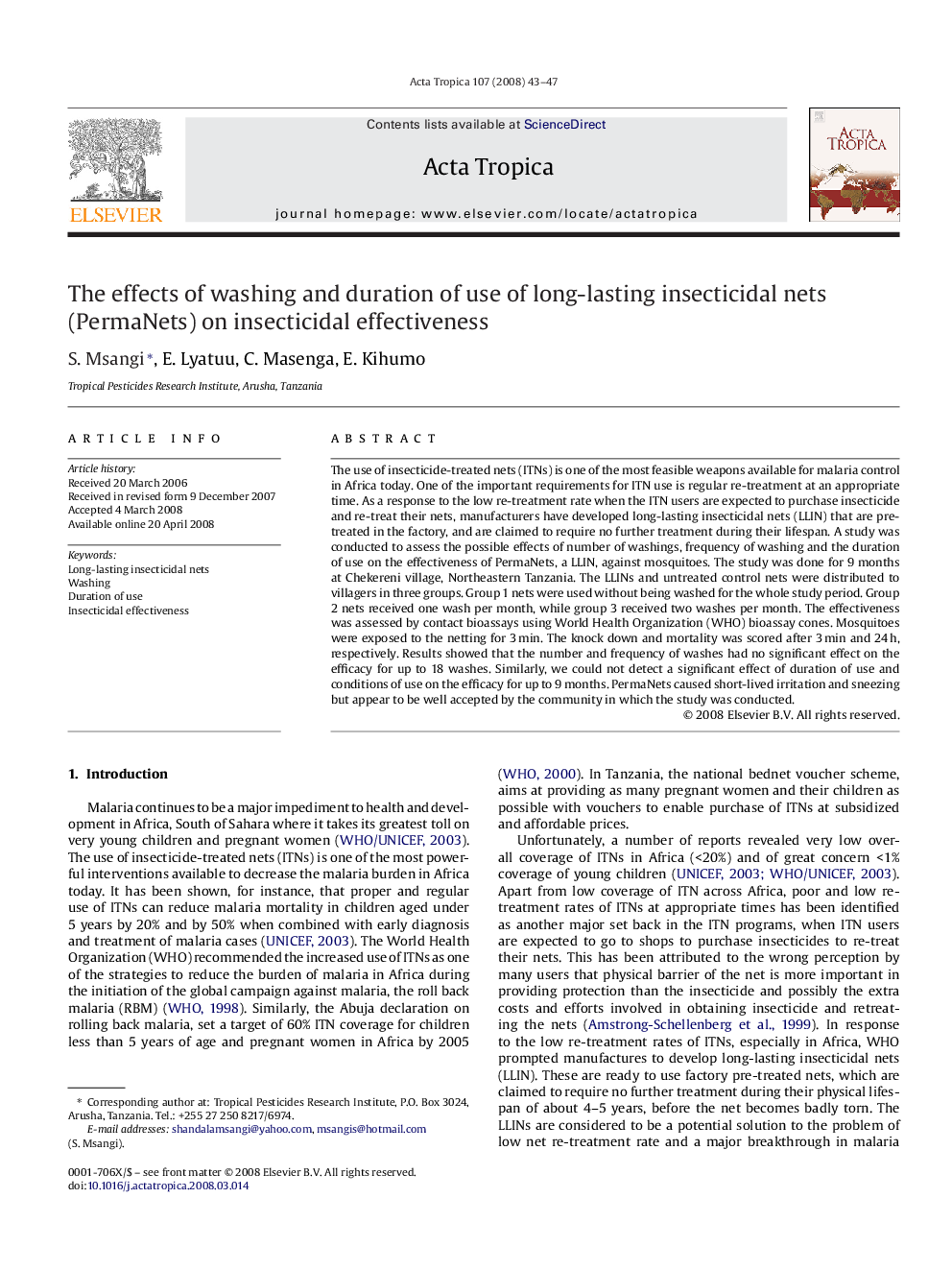| Article ID | Journal | Published Year | Pages | File Type |
|---|---|---|---|---|
| 3394453 | Acta Tropica | 2008 | 5 Pages |
The use of insecticide-treated nets (ITNs) is one of the most feasible weapons available for malaria control in Africa today. One of the important requirements for ITN use is regular re-treatment at an appropriate time. As a response to the low re-treatment rate when the ITN users are expected to purchase insecticide and re-treat their nets, manufacturers have developed long-lasting insecticidal nets (LLIN) that are pre-treated in the factory, and are claimed to require no further treatment during their lifespan. A study was conducted to assess the possible effects of number of washings, frequency of washing and the duration of use on the effectiveness of PermaNets, a LLIN, against mosquitoes. The study was done for 9 months at Chekereni village, Northeastern Tanzania. The LLINs and untreated control nets were distributed to villagers in three groups. Group 1 nets were used without being washed for the whole study period. Group 2 nets received one wash per month, while group 3 received two washes per month. The effectiveness was assessed by contact bioassays using World Health Organization (WHO) bioassay cones. Mosquitoes were exposed to the netting for 3 min. The knock down and mortality was scored after 3 min and 24 h, respectively. Results showed that the number and frequency of washes had no significant effect on the efficacy for up to 18 washes. Similarly, we could not detect a significant effect of duration of use and conditions of use on the efficacy for up to 9 months. PermaNets caused short-lived irritation and sneezing but appear to be well accepted by the community in which the study was conducted.
